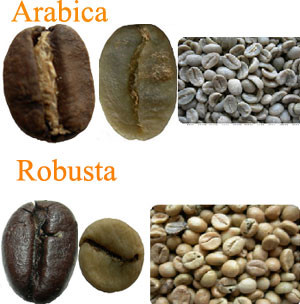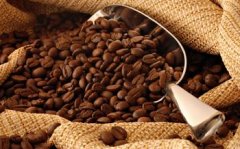What do you not know about robsta robsta's notoriety?

People always habitually look at things in dichotomy, good and bad, good and evil, good and bad. The same is true in the world of coffee. "arabica" coffee beans are always classified as "good", while its distant relative "Robusta" coffee beans are often classified as "bad". We may describe it this way: if Arabica is a gift from angels, Robusta is like the booger of the devil, always despised and spurned by coffee gluttons.
Why is Robusta so notorious? Robusta beans, which are round in appearance and look like soybeans at first glance, are also known as thick and strong beans. They have strong resistance to diseases and insect pests, large output and low price. The boutique coffee industry used to have a very poor impression of Robusta because it usually does not have a charming and meticulous flavor. The bigger problem is that because the setting is a low-cost product, most of the planting methods are very rough, resulting in a bad smell. It often smells like dirt, dirt, and sometimes even a smell like charred tires and burning plastic. Ten years ago, I had a chance to taste several cheap Vietnamese robusta beans, some of which were unforgettable because they were like charred wheat tea flavored with tires, and I couldn't help spitting them out with the other nine bad flavors. I don't want another sip.
Wow! If Robusta beans are so bad, why talk about it? That's a good question! As mentioned at the beginning of this article, everything has its advantages and disadvantages. Good beans take you to heaven, rotten beans let you hang your heart! This is true of Arabica, and Robusta is no exception! In fact, under the tide of boutique coffee in recent years, exquisite robusta beans with high standard treatment have appeared in the world! The representative of boutique India Kappi Royale beans is India's Robusta (Robusta "Kappi Royale" Robusta).
Kappi Royale means "top grade". At present, there are at least four (and growing) private coffee farms in India to grow and produce high-quality "Coffee Royal" and "Kappi Royale" Robusta coffee beans with refined Arabica standards and procedures! It includes exquisite full water washing treatment and Pulp Natural mucosal drying semi-washing treatment which is popular in recent years. The advent of the "Coffee Royal" grade exquisite Robusta beans has undoubtedly begun to change the world's impression of Robusta! Most people who have drunk it will be surprised by its thick and clean characteristics. Because of the exquisite planting and handling procedures, the flavor of the Royal Coffee Robusta is mostly quite clean, without the intrusive flavor of the cheap Robusta (off-flavors). The Robusta is born without the elegant aroma of Arabica beans, replaced by a thicker, calmer taste, as well as strong walnut, peanut, hazelnut and wheat flavors like peanut butter and hazelnut.
India's "Coffee Royal" grade Robusta currently produces very little, but it has begun to attract the attention of the elite of the boutique coffee industry all over the world. Italian coffee expert David Schumann C. Schomer's famous Seattle-based Espresso Vivace began adding 14% of India's "Royal Coffee" Robusta to its Italian formula beans as early as a decade ago. Paradise Roasters, the national coffee evaluation points champion roaster, took the lead in the North American boutique coffee market, launching 100% Indian CxR espresso in 2009, and received a Coffee Review rating of 90 and 91 points in 2009 and 2010! It proves that Robusta is not what it used to be!
Incidentally, the price of Robusta is not cheap, even more expensive than many Elaraby beans! So, from now on, please stop saying: Robbins are rotten beans-after all, times have changed! With the emergence and gradual attention of high-quality Robusta, it is bound to cause some chain reactions and changes to the boutique coffee culture (to be continued).
Note: David C.Schomer cancelled the addition of Robusta beans to 100% arabica formula in the second quarter of 2009, which you don't know about Robusta (2).
If you want to ask the country or region that loves Robusta beans most, the first place is Italy, the hometown of espresso! If you narrow it down, to be more precise, the largest use of robusta beans is in southern Italy, such as Palermo, Naples and Sicilia. In fact, in southern Italy, most of the coffee people drink contains a considerable proportion of robusta beans. The content of 30% to 60 is commonplace, and the Robusta content of some formula beans is as high as 80% or even 100%!
Open the table of beans supplied by local wholesalers of raw coffee beans in Italy, and you will see a list of more than a dozen, or even as many as two dozen, raw beans from all over the world, for local coffee roasters to choose from. This phenomenon does not exist in other parts of the world, such as the United States and Canada, Northern Europe, Japan and even Taiwan.
You may wonder why the Italians mix a lot of robusta in Arabica beans. Generally speaking, Italians mix with Robusta in order to increase the Crema content of Espresso.
This is only half true, and there is another little-known reason.
It turned out that southern Italy used to be a relatively poor region, where people could only afford cheap coffee, so at first it was mixed with Robusta beans simply to reduce costs. However, after years of massive baking and blending of Robusta, coupled with Italy's natural sensitivity to cooking, they found that Robusta beans have many qualities that Arabica beans do not have. as long as you are familiar with and fully master these qualities, a good cook (coffee roaster) will be able to serve magical dishes (Italian coffee beans). Compared with 44 pairs of chromosomes in Arabica beans, Robbosa beans have only 22 pairs of chromosomes, with caffeine contents of 1.5% and 2.8%, respectively. The two are completely different varieties and cannot be mixed, which explains why there are many complete differences between the two.
I like to say that Arabica beans are like earthlings, which are easy to see and familiar to us. Rob Tadou is like an alien, although it has the appearance of being close to the people on earth, but it is actually completely different on the inside. Earthlings and aliens have their own advantages and disadvantages, and each has its own advantages and disadvantages. Although they are different races and cannot marry to have children, through exquisite arrangements, putting them together cleverly to make up for their weaknesses and full cooperation, they will be able to contribute their respective strengths and excite an amazing spark!
I was born to be useful. Robusta and Arabica are both gifts from angels. The only difference is between those who use them.

Left: Robusta, right: Arabica.
Source of this article: http://page.renren.com/600009405/index
Important Notice :
前街咖啡 FrontStreet Coffee has moved to new addredd:
FrontStreet Coffee Address: 315,Donghua East Road,GuangZhou
Tel:020 38364473
- Prev

Prevention and control of coffee rust is the main disease of coffee.
1. Coffee rust is the main disease of coffee, the most harmful, the damaged plants, light reduced yield, serious death. Coffee rust is mainly harmful to leaves and sometimes to young fruits and twigs. After the leaves were infected, many light yellow spots appeared at first and enlarged in the form of water stains, followed by orange-yellow powdery spores on the back of the leaves, and there was a light green halo around the disease spots, which gradually expanded or connected in the later stage.
- Next

Yunnan Dehong small Coffee planting Base
Dehong small grain coffee is native to Africa and Ethiopia and is the main cultivated variety in the world. In 1951, coffee seed was first introduced to Dehong Luxi Cotton cropping Experimental Station for productive cultivation. The seedlings were planted in 6 mu and grew well. In 1956, the Dehong Prefecture Committee decided to vigorously develop coffee in the whole state, and held a training course on coffee planting techniques throughout the state, so that small-grain coffee was widely developed in the whole state. 1958 de
Related
- Beginners will see the "Coffee pull flower" guide!
- What is the difference between ice blog purified milk and ordinary milk coffee?
- Why is the Philippines the largest producer of crops in Liberia?
- For coffee extraction, should the fine powder be retained?
- How does extracted espresso fill pressed powder? How much strength does it take to press the powder?
- How to make jasmine cold extract coffee? Is the jasmine + latte good?
- Will this little toy really make the coffee taste better? How does Lily Drip affect coffee extraction?
- Will the action of slapping the filter cup also affect coffee extraction?
- What's the difference between powder-to-water ratio and powder-to-liquid ratio?
- What is the Ethiopian local species? What does it have to do with Heirloom native species?

